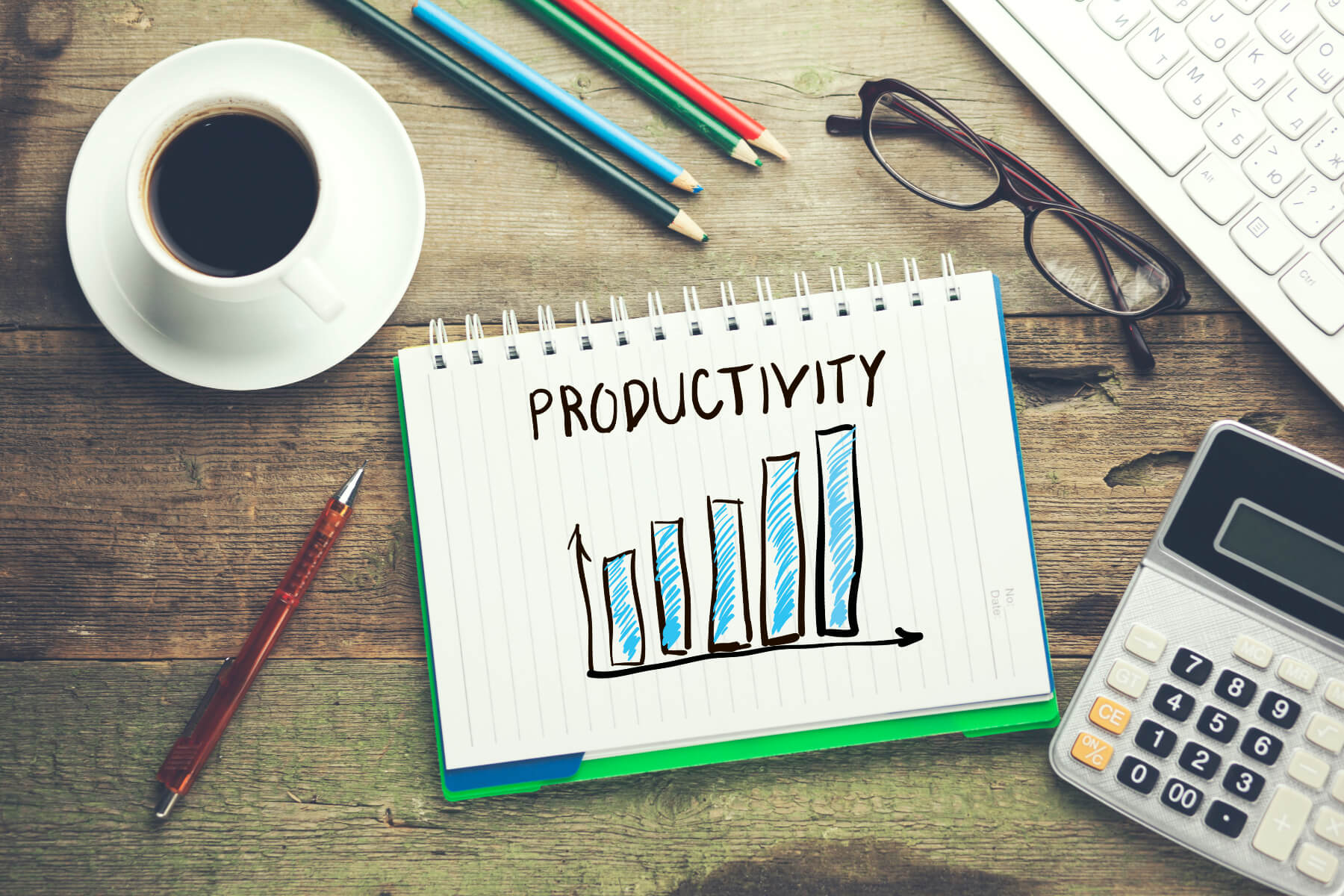Estimated reading time: 8 minutes
Table of contents
- Understanding ADHD and Productivity
- Increasing Productivity and organizing projects with ADHD
- 1. Break Projects into Smaller Tasks
- 2. Use a Project Management System to Stay Organized
- 3. Set Realistic Deadlines
- 4. Limit Distractions
- 5. Use Visual Aids and Visual Cues as Reminders to stay focused
- 6. Take Regular Breaks
- 7. Seek Additional Support & Accountability
- 8. Creating a Quiet and Comfortable Workspace
- 9. Finding Ways to Make Repetitive Tasks More Engaging
- Conclusion
Attention Deficit Hyperactivity Disorder (ADHD) can present a range of challenges when it comes to organizing projects and to increasing productivity. The traditional tips and tricks for improving productivity are typically recommended for people without ADHD. More often than not, these things will not work for folks with ADHD brains, who face unique challenges regarding productivity and focus. The reasons for this are complex and physiological in nature.
Individuals with ADHD may struggle with time management, prioritization, and completing tasks. Unmanaged, these challenges can impact outcomes and performance at work, school, or personal projects. However, with the right strategies and tools, individuals with ADHD can find some balance through these challenges and successfully manage their projects.
Understanding ADHD and Productivity
Attention Deficit Hyperactivity Disorder (ADHD) is a neurodevelopmental disorder that affects both children and adults. Symptoms of inattention, hyperactivity, and impulsivity characterize it. These symptoms can significantly impact an individual’s productivity, as they often struggle with focusing, organizing, and completing certain tasks.
Individuals with ADHD frequently face challenges with executive function, which includes planning, time management, and self-regulation. This can lead to procrastination, missed deadlines, and decreased productivity. Additionally, ADHD can affect motivation, making it difficult to maintain interest in certain tasks or activities.
However, with the right strategies and accommodations, individuals with ADHD can improve their productivity and achieve their goals. By understanding how ADHD affects productivity, individuals can develop effective coping mechanisms and techniques to manage their symptoms and stay focused.
Increasing Productivity and organizing projects with ADHD
If you’re struggling to manage projects with ADHD, you’re not alone. Here are some of the tips and tricks that I use here at Leantime to organize my projects:
1. Break Projects into Smaller Tasks
One of the biggest challenges for individuals with ADHD is the ability to focus on a task for an extended period of time. Adults with ADHD tend to struggle with long, multi-step tasks, often leading to distractions and reduced productivity. Breaking projects down into smaller, manageable tasks can help individuals with ADHD maintain focus and avoid feeling overwhelmed.
For example, instead of working on a large project all at once, break it down into smaller tasks and prioritize them based on importance, urgency, work effort and return on the time. For me, this helps to eliminate being overwhelmed but I also feel a sense of accomplishment as I start to clear things off my always growing list. Feeling accomplished then helps motivate me to start the next one.
One other way to prioritize is based on looking at the goal: What gets me closer to the goal of this project? Studies show the dopamine spike occurs on the way to the goal and in envisioning it — not at the moment of achievement. Use smaller tasks to get closer to the goal.
2. Use a Project Management System to Stay Organized
A task management system can be incredibly helpful for individuals with ADHD. This can be as simple as a to-do list or a more complex system such as Trello, Asana, or an open source platform like Leantime. One of the well-known ADHD tips for adults is utilizing cognitive-behavioral therapy (CBT) to improve daily functioning.
A task management system will allow you to prioritize your tasks, set deadlines, and track your progress. It can also be used to create reminders and alerts, so you never forget an important task. Effective routines are considered one of the best tips for managing ADHD.
The caveat I would add into focusing on a task management only system is that many of them stay in just task management and won’t help you to focus on the goal. As we mentioned in the last tip, the goal helps with dopamine and dopamine helping with motivation.
Many of them are also feature complex and the effort to set up can be both daunting and distracting. If the system is too complex to set up, and if your ADHD is like mine, that means it’s not getting set up.
Side note: These are things that we consider as we build features in Leantime. Try the system for free and as you use it, if you find things are impacting your ADHD — send us a note. Your experience matters.
3. Set Realistic Deadlines
Setting realistic deadlines is crucial for organizing projects with ADHD. If a deadline is too far in the future, it can be easy to lose motivation and let the task slip. On the other hand, if a deadline is too soon, it can be overwhelming and lead to a stress cycle.
It’s important to set deadlines that are realistic and attainable, taking into account your own limitations and the amount of time required to complete the task. One way to do this is to use the SMART goal framework.
4. Limit Distractions
Distractions can be a major challenge for individuals with ADHD. It’s important to eliminate distractions as much as possible so you can stay focused on your tasks.
This can include turning off notifications on your phone, finding a quiet workspace, and minimizing the amount of clutter in your environment. Most phones today now have specific modes you can create to filter out notification types and can be time set to help with this as well.
5. Use Visual Aids and Visual Cues as Reminders to stay focused
Remember the point about using goals to stay motivated above? Another way to represent that is through visual aids. This can include using a whiteboard or even sticky notes to represent your projects and tasks visually.
Visual aids can help you see the big picture and keep track of your progress. They can also be used alongside project management systems to support task prioritization and setting reminders.
6. Take Regular Breaks
It’’s important to take regular breaks whether you’’re feeling overwhelmed or burnt out. This can include taking a short walk, stretching, or taking a few deep breaths. Taking regular breaks can be super helpful in maintaining productivity.
It’s important not to wait until you’re burned out to take that break. If you tend to hyper-focus, you may need to balance hyper-focusing, getting things done, and staying fresh and capable with breaks.
Ultimately, taking breaks can help you recharge and refocus, allowing you to be more productive when you return to your tasks.
7. Seek Additional Support & Accountability
It’s important to seek support when you’re struggling with organizing your projects.
One support option for ADHD is called Body Doubling. This involves creating an accountability system with a friend or peer. Body double is a strategy for enhancing focus and accountability during tasks, particularly for individuals with ADHD. This can be particularly helping when you’re working on a project with someone else — and in some cases, mentioning the ADHD isn’t a requirement.
Remember, too, that ADHD is protected under the Americans with Disabilities Act (ADA) and there are ways you can get support from your employer. While I realize that not everyone will feel comfortable doing this, there are organizations that want you to be successful and can make accommodations to help.
The accountability of another person and the support can be really helpful with managing ADHD symptoms.
8. Creating a Quiet and Comfortable Workspace
Creating a quiet and comfortable workspace is essential for individuals with ADHD to stay focused and productive. A clutter-free and organized environment can help reduce distractions and improve concentration. Here are some tips to create a productive workspace:
- • Identify a quiet and comfortable location for your workspace, free from distractions and interruptions.
- • Invest in a comfortable and ergonomic chair, desk, and lighting to reduce physical discomfort and promote focus.
- • Use noise-cancelling headphones or earplugs to block out background noise and minimize distractions.
- • Consider using a standing desk or a sit-stand workstation to alternate between sitting and standing throughout the day.
- • Keep your workspace organized and clutter-free by using storage bins, shelves, and a desk organizer.
- • Use visual cues such as sticky notes, reminders, and a to-do list to stay on track and focused.
9. Finding Ways to Make Repetitive Tasks More Engaging
Repetitive and boring tasks can be challenging for individuals with ADHD, as they can lead to boredom, frustration, and decreased motivation. However, there are several strategies that can help make repetitive tasks more engaging and increase productivity. Below are some helpful tips:
- • Break down repetitive tasks into smaller, manageable chunks, and focus on one chunk at a time.
- • Use the Pomodoro Technique, which involves working in focused 25-minute increments, followed by a 5-minute break.
- • Listen to music or podcasts while completing repetitive tasks to make them more enjoyable.
- • Use positive affirmations and self-talk to boost motivation and stay focused.
- • Reward yourself after completing a repetitive task to increase motivation and satisfaction.
- • Consider delegating repetitive tasks to others, such as a virtual assistant or a colleague, to free up time and energy for more important tasks.
Conclusion
Please remember to be kind to yourself. Every individual with ADHD is unique and what works for one person may not work for another. It’s important to experiment with different strategies and tools to find what works best for you. Don’t be afraid to try new things and make changes as needed.
In conclusion, organizing projects with ADHD may require a bit of extra effort and creativity but with the right approach and tools, it can be done effectively. By breaking down tasks, using task management systems, setting realistic deadlines, eliminating distractions, using visual aids, taking breaks, and seeking support, you can successfully manage your projects.



